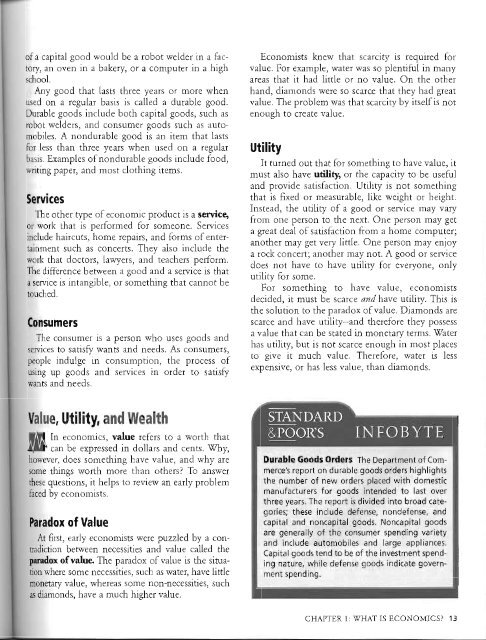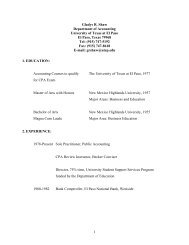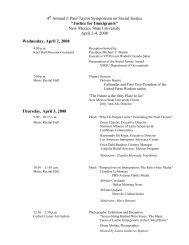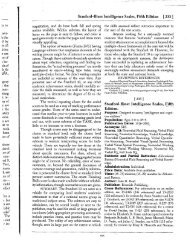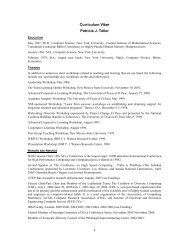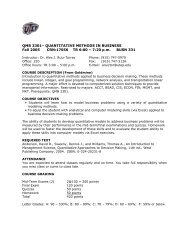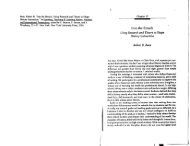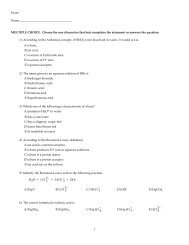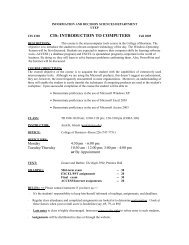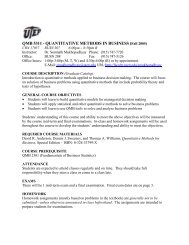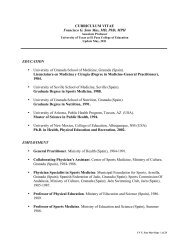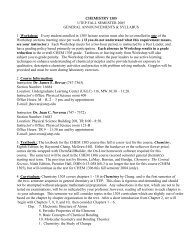Supply & Demand - Faculty.utep.edu
Supply & Demand - Faculty.utep.edu
Supply & Demand - Faculty.utep.edu
You also want an ePaper? Increase the reach of your titles
YUMPU automatically turns print PDFs into web optimized ePapers that Google loves.
of a capital good would be a robot welder in a factory,an oven in a bakery, or a computer in a highschool.Any good that lasts three years or more whenused on a regular basis is called a durable good.Durable goods include both capital goods, such asrobot welders, and consumer goods such as automobiles.A nondurable good is an item that lastsfor less than three years when used on a regularbasis. Examples of nondurable goods include food,writing paper, and most clothing items.ServicesThe other type of economic product is a service,or work that is performed for someone. Servicesinclude haircuts, home repairs, and forms of entertainmentsuch as concerts. They also include thework that doctors, lawyers, and teachers perform.The difference between a good and a service is thata service is intangible, or something that cannot betouched.ConsumersThe consumer is a person who uses goods andservices to satisfy wants and needs. As consumers,people indulge in consumption, the process ofusing up goods and services in order to satisfywants and needs.Economists knew that scarcity is required forvalue. For example, water was so plentiful in manyareas that it had little or no value. On the otherhand, diamonds were so scarce that they had greatvalue. The problem was that scarcity by itself is notenough to create value.UtilityIt turned out that for something to have value, itmust also have utility, or the capacity to be usefuland provide satisfaction. Utility is not somethingthat is fixed or measurable, like weight or height.Instead, the utility of a good or service may varyfrom one person to the next. One person may geta great deal of satisfaction from a home computer;another may get very little. One person may enjoya rock concert; another may not. A good or servicedoes not have to have utility for everyone, onlyutility for some.For something to have value, economistsdecided, it must be scarce and have utility. This isthe solution to the paradox ofvalue. Diamonds arescarce and have utility-and therefore they possessa value that can be stated in monetary terms. Waterhas utility, but is not scarce enough in most placesto give it much value. Therefore, water is lessexpensive, or has less value, than diamonds.Valu , Utility, .ndathIn economics, value refers to a worth thatcan be expressed in dollars and cents. Why,however, does something have value, and why aresome things worth more than others? To answerthese questions, it helps to review an early problemfaced by economists.Paradox of ValueAt first, early economists were puzzled by a contradictionbetween necessities and value called theparado:x ofvalue. The paradox of value is the situationwhere some necessities, such as water, have littlemonetary value, whereas some non-necessities, suchas diamonds, have a much higher value.Durable Goods Orders The Department of Commerce'sreport on durable goods orders highlightsthe number of new orders placed witlh domesticmanufacturers for goods intended to last overthree years. The report is divided into broad categories;these include defense, nondefense, andcapital and noncapital goods, Noncapital goodsare generally of the consumer spending varietyand 'Include automobiles and large appliances.Capital goods tend to be of the investment spendingnature, while defense goods indicate governmentspending.- - - - -----~-CHAPTER 1: WHAT IS ECONOMICS' 13


